Small Bites on Legs: Identifying Common Bug Bites and Their Causes
What causes small bites on legs. How to identify common bug bites. What are the symptoms of mite and flea bites. How to treat and prevent insect bites on legs.
Understanding Mites: Tiny Arthropods That Can Cause Big Problems
Mites are small arthropods closely related to spiders and ticks. While most mites feed on other insects or dead organic matter, some species can bite humans and cause skin irritation. Let’s explore the world of mites and their impact on human health.
Common Types of Mites That Affect Humans
- Chiggers
- Scabies mites
- Rat mites
- Bird mites
- Northern fowl mites
Despite online fears, home mite infestations are relatively rare and often less problematic than commonly believed. Mike Merchant, PhD, a former professor of entomology at Texas A&M University, reassures that mite issues are generally manageable.
Health Implications of Mite Bites
Can mite bites pose health risks? While most mite bites cause minor skin irritation, some can lead to more serious reactions. Chiggers, for instance, are outdoor mites that frequently bite humans during their larval stage, resulting in intensely itchy red welts.

Indoor mite problems often stem from animal nests. These mites may leave their original habitat and bite humans, typically causing an itchy skin rash with small lumps or pimples. Symptoms usually subside within a week, and can be managed with ice and anti-itch creams like hydrocortisone.
Scabies: The Persistent Mite Infestation
Scabies stands out among mite infestations due to its ability to live on human skin. These mites infest the skin to lay eggs and feed, usually spreading through direct person-to-person contact. Unlike other mite bites, scabies rashes persist without proper medical treatment.
Treating Scabies Infestations
How can scabies be effectively treated? Medical intervention is crucial for scabies. Treatment typically involves prescription skin creams or lotions designed to eliminate the mites. Additionally, decontaminating your living space is essential:
- Vacuum your home thoroughly on the day treatment begins
- Wash bedding, clothing, and towels in hot water
- Dry items on high heat or dry-clean them
- Seal non-washable items in plastic bags for at least 72 hours
Dust Mites and Allergies: A Common Household Concern
While dust mites don’t bite, they can trigger allergies in some individuals. These allergies often manifest as mild, seasonal symptoms such as runny nose, sneezing, and itchy eyes. Over-the-counter and prescription allergy medications can help alleviate these symptoms.

Controlling Dust Mites in Your Home
Is it possible to completely eliminate dust mites from your home? While total eradication is nearly impossible, you can significantly reduce their presence through several measures:
- Regular cleaning and dusting
- Installing HEPA air filters
- Using bedding that can be washed in hot water
- Choosing dust-resistant bedding materials
Fleas: Tiny Jumpers That Pack a Punch
Fleas are blood-sucking insects that primarily live on mammals, particularly furry pets like dogs and cats. These wingless, brown insects are small but visible to the naked eye, measuring about an eighth of an inch in length.
Identifying Flea Bites
How can you recognize flea bites? Flea bites typically appear as small red bumps, often in groups of three or more. They’re usually found on the lower legs, as fleas tend to hide in carpets and jump onto passing humans. These bites can be itchy but generally resolve within a week.
To relieve symptoms of flea bites, apply ice to reduce swelling and use hydrocortisone cream to alleviate itching. If you suspect a flea infestation, it’s crucial to treat both your pets and your home environment to break the flea life cycle.
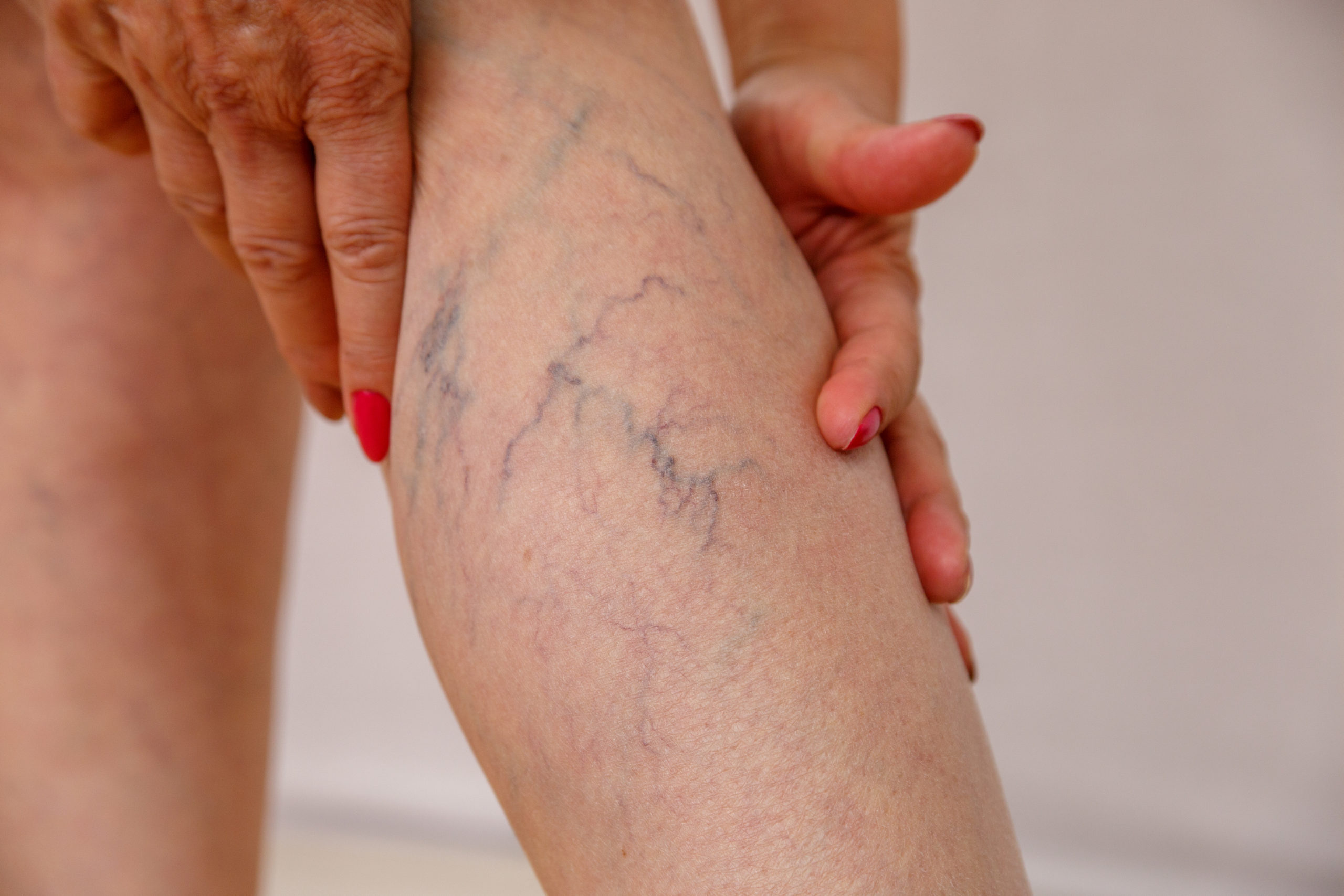
Preventing Mite and Flea Infestations: Proactive Measures
Taking preventive steps can significantly reduce the risk of mite and flea infestations in your home. Here are some effective strategies:
Mite Prevention
- Regularly inspect and clean areas where animals might nest
- Seal entry points to prevent rodents and birds from entering your home
- Use dehumidifiers to reduce moisture, which attracts mites
- Vacuum frequently, especially in areas where pets spend time
Flea Prevention
- Treat pets regularly with veterinarian-approved flea prevention products
- Wash pet bedding weekly in hot water
- Vacuum carpets and upholstery frequently, disposing of the vacuum bag in a sealed plastic bag
- Consider using natural flea repellents like diatomaceous earth in your yard
When to Seek Medical Attention for Bug Bites
While most mite and flea bites can be managed at home, certain situations warrant professional medical care. Consult a healthcare provider if you experience:
- Severe allergic reactions, including difficulty breathing or swelling of the face or throat
- Signs of infection, such as increased redness, warmth, or pus around the bite area
- Persistent rash or itching that doesn’t improve with over-the-counter treatments
- Fever or flu-like symptoms following a bite
- Suspicion of scabies infestation, as this requires prescription treatment
Natural Remedies for Bug Bite Relief
In addition to over-the-counter treatments, several natural remedies can help alleviate the discomfort of bug bites. These home remedies can be particularly useful for mild cases or when commercial products are not immediately available.

Effective Natural Treatments
- Aloe vera gel: Known for its soothing and anti-inflammatory properties
- Tea tree oil: Possesses antimicrobial and anti-inflammatory qualities (dilute before applying to skin)
- Baking soda paste: Can help reduce itching and inflammation
- Apple cider vinegar: May help neutralize the bite and reduce itching
- Honey: Has natural antibacterial properties and can soothe irritated skin
- Cold compress: Helps reduce swelling and numb the area to alleviate itching
Remember to test these remedies on a small area of skin first to ensure you don’t have an adverse reaction. If symptoms persist or worsen, discontinue use and consult a healthcare professional.
The Role of Professional Pest Control in Managing Infestations
When dealing with persistent mite or flea problems, professional pest control services can provide effective solutions. These experts have the knowledge, experience, and specialized tools to address infestations comprehensively.
Benefits of Professional Pest Control
- Accurate identification of the specific pest causing the problem
- Access to professional-grade treatments not available to consumers
- Knowledge of pest behavior and lifecycle for targeted elimination
- Implementation of long-term prevention strategies
- Safer application of pesticides when necessary
When choosing a pest control service, look for licensed professionals with good reviews and ask about their approach to eco-friendly and pet-safe treatments.
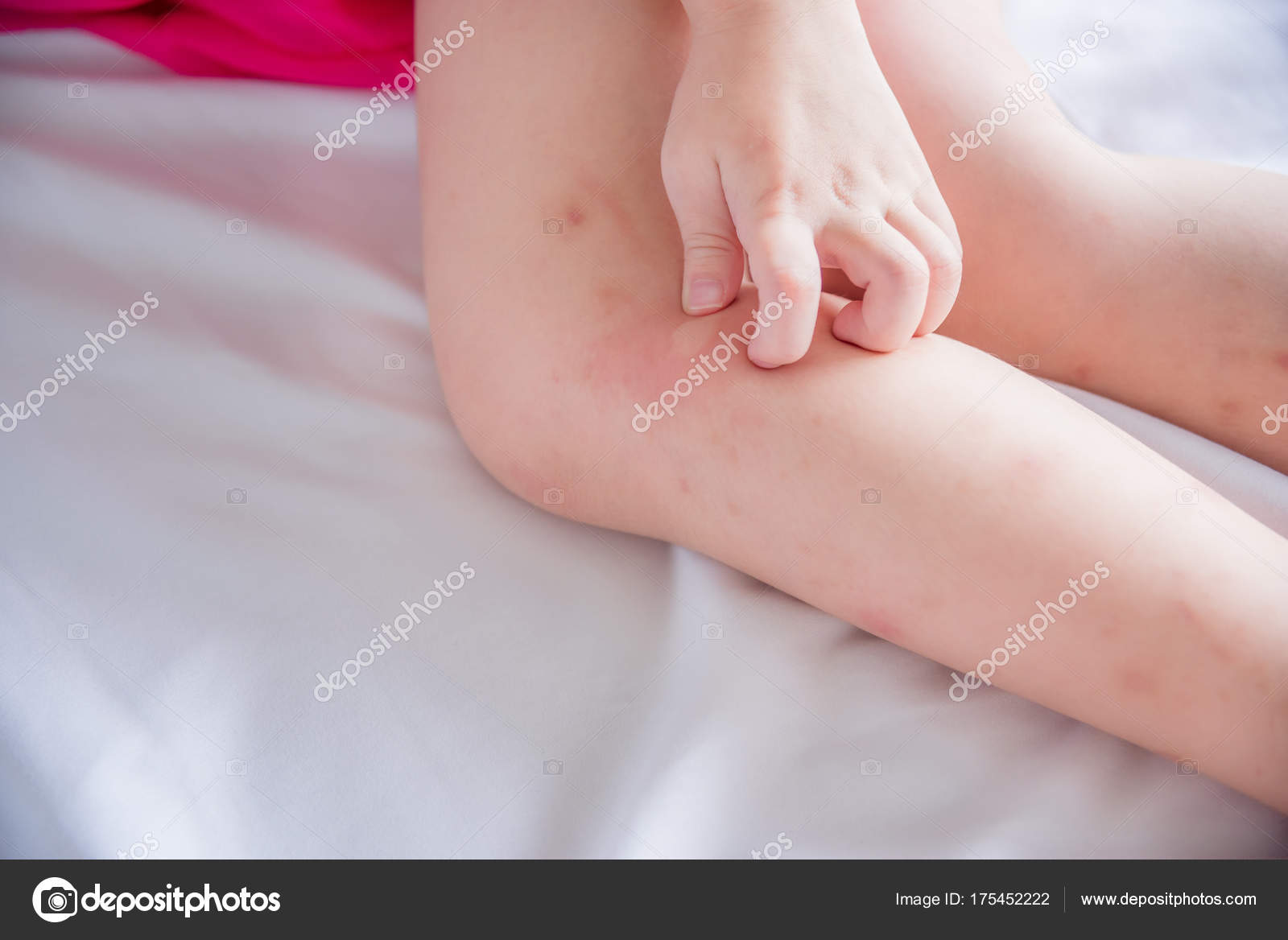
Understanding the Environmental Factors That Attract Biting Pests
Certain environmental conditions can make your home more attractive to mites, fleas, and other biting pests. By addressing these factors, you can create a less hospitable environment for these unwanted visitors.
Key Environmental Factors
- Humidity: Many pests thrive in moist environments
- Temperature: Warm conditions often encourage pest proliferation
- Clutter: Provides hiding spots and breeding grounds for pests
- Food sources: Crumbs and open food containers can attract pests
- Outdoor access: Gaps in windows, doors, or foundations allow pests to enter
To mitigate these factors, consider using dehumidifiers, sealing entry points, maintaining a clean living space, and properly storing food. Regular yard maintenance, including keeping grass short and removing leaf litter, can also help reduce outdoor pest populations that might make their way indoors.
The Impact of Climate Change on Pest Populations
Climate change is altering the distribution and behavior of many pest species, including those that bite humans. Understanding these shifts can help us better prepare for and manage potential increases in pest-related issues.
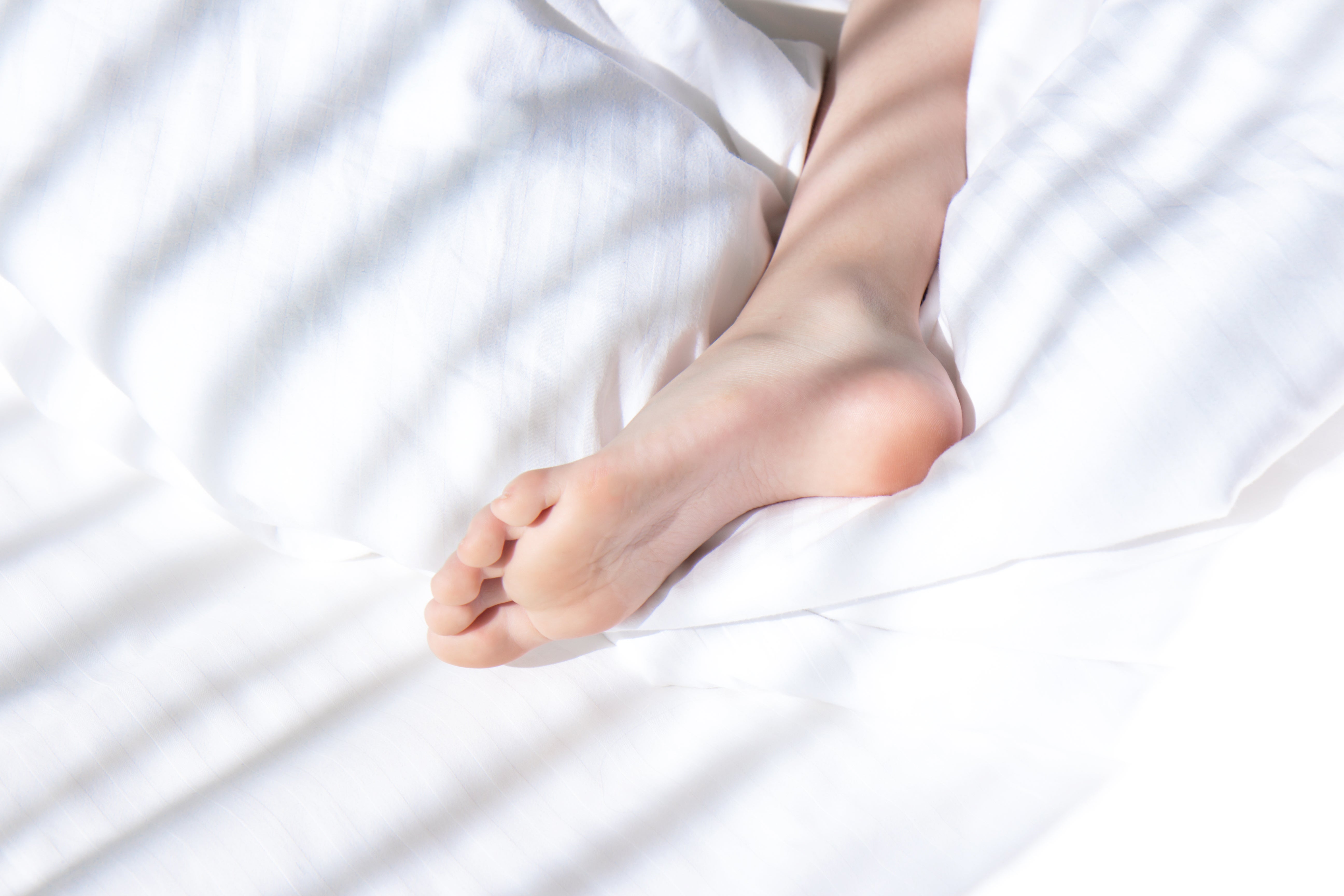
Climate Change Effects on Pests
- Extended breeding seasons due to warmer temperatures
- Expansion of geographical ranges for certain pest species
- Changes in pest behavior and life cycles
- Increased survival rates during milder winters
- Alterations in the effectiveness of current pest control methods
As climate patterns continue to change, it’s important to stay informed about pest trends in your area and adapt prevention and control strategies accordingly. This may involve more frequent pest inspections, adjusting the timing of preventive treatments, and being vigilant about new or unusual pest activities.
Innovations in Pest Control Technology
The field of pest control is constantly evolving, with new technologies emerging to provide more effective and environmentally friendly solutions. These innovations offer promising alternatives to traditional pest management methods.
Cutting-Edge Pest Control Technologies
- Smart pest traps that use AI to identify and target specific species
- Pheromone-based attractants for more precise pest targeting
- Ultrasonic devices that repel pests without chemicals
- Biological control methods using natural predators or pathogens
- Nanotechnology-based pesticides for more efficient and safer applications
While many of these technologies are still in development or early stages of implementation, they represent the future of pest control. As these innovations become more widely available, they may offer more sustainable and effective ways to manage biting pests in both residential and commercial settings.

The Psychological Impact of Pest Infestations
Dealing with biting pests can have significant psychological effects on individuals and families. Understanding and addressing these impacts is crucial for overall well-being during and after an infestation.
Common Psychological Responses to Pest Problems
- Anxiety and stress about potential bites or health risks
- Sleep disturbances due to worry or actual pest activity
- Feelings of embarrassment or shame about having a pest problem
- Obsessive cleaning or checking behaviors
- Social isolation to avoid spreading pests to others
If you’re experiencing significant distress due to a pest infestation, consider seeking support from a mental health professional. They can provide coping strategies and help manage anxiety related to the situation. Additionally, being open with friends and family about the issue can provide emotional support and practical assistance in dealing with the infestation.
Educating Children About Bug Bites and Pest Prevention
Teaching children about bug bites and pest prevention is essential for their safety and can foster a sense of responsibility towards maintaining a healthy living environment. Here are some key points to cover when educating children:

Important Lessons for Kids
- How to identify common biting insects and their bites
- The importance of not scratching bites to prevent infection
- Basic hygiene practices that help prevent pest infestations
- Safe ways to enjoy outdoor activities while minimizing bug bites
- What to do if they suspect a bite or see a pest in the home
Make the learning process fun and engaging by using colorful illustrations, interactive games, or even supervised “bug hunts” in the backyard. Encourage children to ask questions and share their experiences with bugs and bites. This open dialogue can help alleviate fears and empower children to take an active role in pest prevention.
The Future of Pest Management: Sustainable and Integrated Approaches
As awareness of environmental issues grows, the pest management industry is shifting towards more sustainable and integrated approaches. These methods aim to control pests effectively while minimizing environmental impact and reducing reliance on chemical pesticides.

Key Components of Sustainable Pest Management
- Integrated Pest Management (IPM) strategies that combine multiple control methods
- Use of biopesticides derived from natural materials
- Habitat modification to make environments less attractive to pests
- Emphasis on prevention through improved building design and maintenance
- Community-wide approaches to pest control for more effective results
The future of pest management will likely involve a more holistic approach, considering the entire ecosystem and how different species interact. This may include using beneficial insects to control pest populations, implementing urban planning strategies that naturally deter pests, and developing new technologies that can predict and prevent infestations before they occur.
As we continue to face challenges with biting pests, staying informed about the latest developments in pest management can help us make more effective and environmentally responsible choices. By adopting these sustainable approaches, we can work towards creating healthier living spaces while maintaining the delicate balance of our ecosystems.
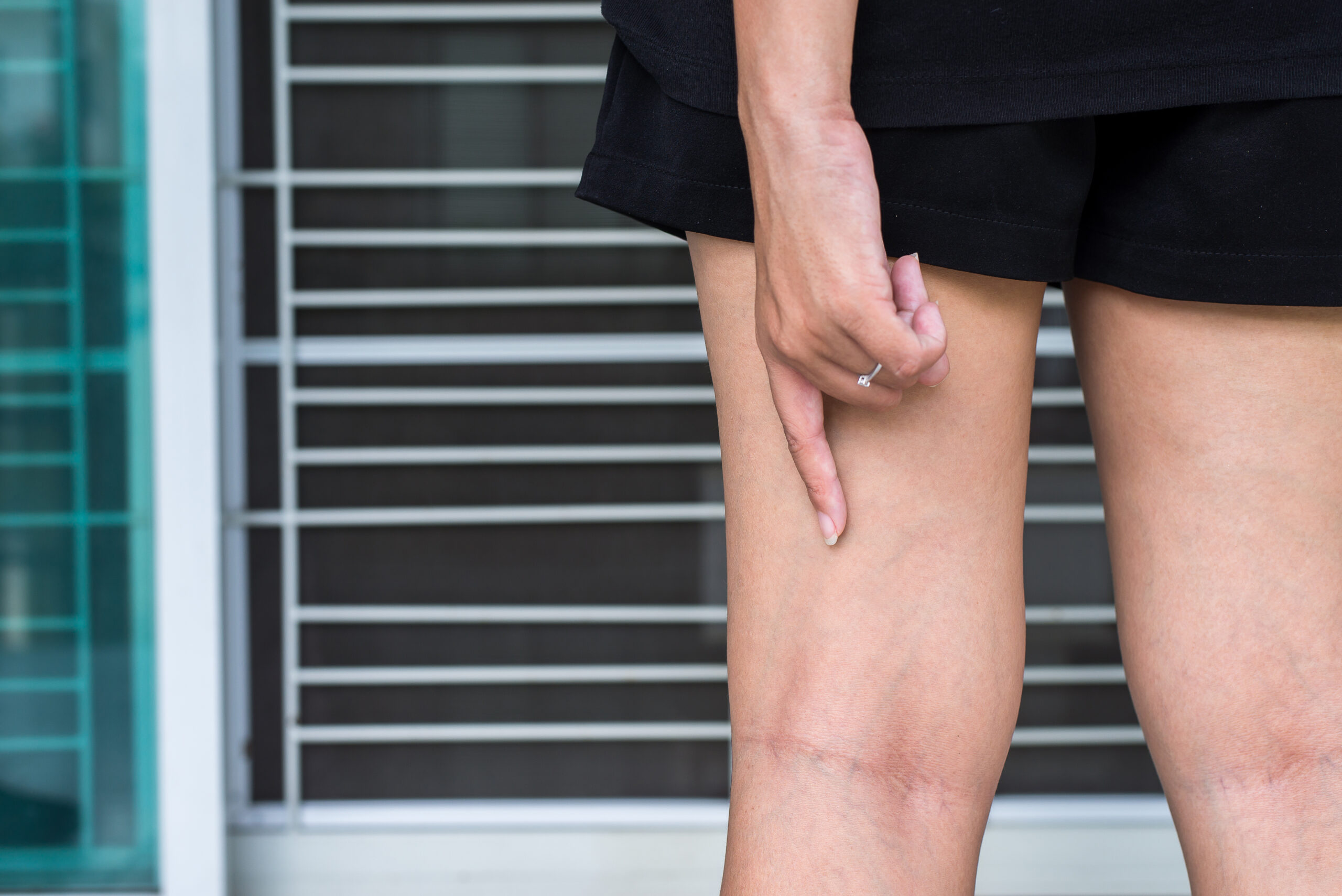
Everything You Need to Know About Mite and Flea Bites
What Bit Me? Spot These 12 Bug Bites
What Are Mites, and Do They Bother Humans?
Mites are arthropods, not insects, and are close cousins with spiders and ticks. (1) Most types of mites feed on other insects or on dead plant and animal material. (Dust mites, for example, feed mostly on dead skin cells.)
But there are a few types that bite or affect people: (2,3)
- Chiggers
- Scabies
- Rat mites
- Bird mites
- Northern fowl mites
Despite what you may have heard or read online, home mite infestations are fairly rare and tend to be much less of an issue than people assume, says Mike Merchant, PhD, a former professor of entomology at Texas A&M University in Dallas. “A lot of the mite stuff on the internet makes it sound like [a mite infestation is] the end of the world, but it’s not,” he says.
Can Mites Be Harmful to Your Health?
Mite bites can cause skin lumps and rashes and, occasionally, more serious reactions, Dr. Merchant says.
Merchant says.
Among outdoor mites, the only type that frequently bites people is the chigger. The word “chigger” applies to a particular species of mite that bites during its larval stage of development, and their bite produces an intensely itchy red welt, Merchant explains. “There are not too many other mite problems outdoors,” he adds.
RELATED: Everything You Need to Know About Chigger Bites
When it comes to indoor mites that bite or cause health issues, Merchant says most spring from animal nests. “Some mites will infest the nests of birds and rats and mice, and when they become abundant, they’ll leave that site and sometimes wander into the house and bite people,” he explains. In most cases, the bites of these mites cause an itchy skin rash, which may feature small lumps or pimples.
“The skin might be very itchy or red for a few days, but then that will taper off,” Merchant says of mite bites. Ice and anti-itch creams like hydrocortisone can help control the swelling and itching.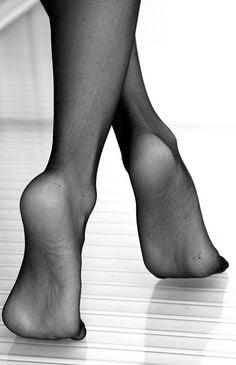 But those symptoms should resolve within a week, he says. (Nearly all species of biting house mites cannot live on human beings, and so they don’t “infest people,” he adds.)
But those symptoms should resolve within a week, he says. (Nearly all species of biting house mites cannot live on human beings, and so they don’t “infest people,” he adds.)
There is one outlier: scabies. These mites infest a person’s skin in order to lay eggs and feed, and are usually only passed by direct person-to-person contact. (4) Like other mites, scabies tend to cause an itchy, pimply red rash. But unlike other mites, those rashes will continue to appear unless the person gets medical treatment, usually a prescription-only skin cream or lotion designed to kill scabies.
Dust mites can cause allergies in some people, but these tend to be of the mild, seasonal allergy variety — stuff like a runny nose, sneezing, and itchy eyes. (5) Over-the-counter and prescription allergy meds can help quell dust mite allergies.
RELATED: Everything You Need to Know About Allergies
How to Get Rid of Mites in Your Household
You don’t need a crazy whole-house treatment or fumigation. You just need to remove the animals and animal nests that are bringing mites into your home, Merchant says. “Everybody always wants a spray to solve these types of mite problems, but the real solution is getting rid of any animals nesting in your home, and animal-proofing your home,” he says. Basically, call in a home pest pro.
You just need to remove the animals and animal nests that are bringing mites into your home, Merchant says. “Everybody always wants a spray to solve these types of mite problems, but the real solution is getting rid of any animals nesting in your home, and animal-proofing your home,” he says. Basically, call in a home pest pro.
The exception here, again, is the scabies mite; in addition to getting medical treatment, you can take steps to eliminate the mites from your household. Scabies mites don’t survive very long when they’re not on human skin. Vacuum your home the day you start treatment and decontaminate your bedding, clothing, and towels by washing these items in hot water and drying on high heat. You can also dry-clean or seal these articles in a plastic bag for at least 72 hours.
When it comes to dust mites, on the other hand, it’s almost impossible to get rid of them all. But frequent home cleaning and dusting, installing HEPA air filters, and buying bedding that can be washed in hot water and that resists dust accumulation can limit allergic reactions.
What Are Fleas, and What Do Flea Bites Look Like?
Fleas are blood-sucking insects that live on mammals — often dogs, cats, or other furry pets. (6) Fleas are brown and wingless. And while they’re small, usually around an eighth of an inch, they’re big enough to see or even feel with your hand, Merchant says.
While they prefer animals to humans, fleas can migrate off pets and onto their owner’s skin. “Usually flea bites are on the lower legs because the fleas get into the carpet and then jump up as we’re walking past,” Merchant explains.
What does a flea bite look like? Like many other types of insect bites, flea bites produce small red bumps that may be itchy and that tend to appear in groups of three or more. Again, ice and hydrocortisone can help relieve symptoms, which tend to be short-lived — a week or less.
More Serious Health Complications Can Arise if You Have Mites or Fleas
Like all biting or stinging insects, mites and fleas can occasionally cause serious allergic reactions, including problems breathing or a swollen limb or throat. Those symptoms warrant a trip to the emergency room.
Those symptoms warrant a trip to the emergency room.
Also, anything that causes itchy skin or open sores can allow in bacteria, which could lead to a secondary infection. (7) If you notice swelling, pain, or a mite or flea bite that seems to be getting worse after a day or two, or if you have a fever or other flu-like symptoms, talk to a doctor. Those could all be signs of a bacterial infection.
Finally, both fleas and mites can transmit some potentially serious diseases to humans — namely types of typhus and spotted fever — though these transmissions are very rare. Symptoms include headaches, fever, rashes, and delirium. (8)
Is It Skeeter Syndrome?
Skeeter syndrome is relatively rare, but having it means you’re having an allergic reaction to a mosquito bite. You’ll notice a bigger, longer-lasting…
By Lisa Rapaport
Are You a Mosquito Magnet? A Coconut-Scented Soap Might Help
Coconut might help keep mosquitoes away, according to a new study, joining other natural insect repellents like peppermint, citronella, lemongrass, and. ..
..
By Lisa Rapaport
Bug Bites and Stings: Everything You Need to Know
Reactions to bug bites and stings range from being very mild to wildly irritating to life-threatening. Here’s how to identify the signs and symptoms of…
By Markham Heid
Did a Bee Sting Me? Treatment Options, Allergic Reactions, Home Remedies, and More
Do bumblebees sting? Certain types of bees can, and it’s possible to have a negative reaction. Get details on the signs you’ve been stung by a bee, bee…
By Valencia Higuera
Everything You Need to Know About Ant Bites
Fire ants and red harvester ants don’t actually bite, they sting. And their stings can be unpleasant. Here’s what you need to know about how to spot ant…
By Markham Heid
Identifying and Treating Spider Bites
Here’s everything you need to know about what a spider bite looks like and what to do about them. Experts say spider bites are actually quite rare, but…
Experts say spider bites are actually quite rare, but…
By Markham Heid
Why Mosquito Bites Itch and How to Get Relief
Mosquito bites itch because your immune system sends histamine to the area to repair damage. The good news is that simple home remedies, and in some cases…
By Markham Heid
Bitten by a Tick? How to Know
Here’s how you know you’ve been bitten by a tick, how to safely remove the tick, and when to see a doctor. Precautions must be taken if you suspect a …
By Markham Heid
What Do Bedbug Bites Look Like?
Bedbugs, which are parasites known by the scientific names of Cimex lectularius and Cimex hemipterus, have been on the rise in the United States in the past decade or so. (1)
More on Insect Bites
Insect Bites Matter When You Have RA
As the name suggests, bedbugs bite at night when you’re asleep in bed, usually about an hour before dawn. (2) If you wake up with a bite, though, don’t immediately assume bedbugs are to blame. The bites look very similar to other insect bites. Here’s what to know to confidently identify bedbug bites and how to go about treating them.
(2) If you wake up with a bite, though, don’t immediately assume bedbugs are to blame. The bites look very similar to other insect bites. Here’s what to know to confidently identify bedbug bites and how to go about treating them.
The bites can appear on any part of the body that’s exposed while you sleep — places like the back of your neck, shoulders, arms, and legs are common, says Steve Durham, president of EnviroCon Termite & Pest in Tomball, Texas.
For most people, bedbug bites result in itchy bumps where the bite occurred, within a day of being bitten. (4) The bites usually look like mosquito bites and will appear as a somewhat swollen red spot that might itch. (1)
RELATED: How to Identify 11 Common Bug Bites and Stings
But the bites will look different from person to person, and some people won’t develop any reaction whatsoever. “The same bedbug could bite two different people and one could have no reaction at all and the other can have an extreme reaction with a swollen arm or itchy rash,” says Eric Braun, a board-certified entomologist and technical services manager for the national pest control company Rentokil. Some people end up developing a rash that looks like eczema. (5)
Some people end up developing a rash that looks like eczema. (5)
It’s also possible that you won’t see a reaction the first time a bedbug bites since it sometimes can take the body a while to react. (6) Some people will have an immediate reaction, while for others it could take two weeks to emerge. Your body will likely become more sensitive to bedbug bites over time, and if you get bitten repeatedly, it could be only a matter of seconds before your body shows a response.
You may notice a single bite, while other times several bites will appear in a line. (1) “In most cases, they occur in clusters or zigzags of flat, itchy bites,” Durham says. “One bedbug will usually take more than one bite, so the severity of your infestation can have a big impact on the severity of your physical reaction to the bites.”
RELATED: 7 Skin Conditions That Look Contagious, But Aren’t
Bedbug bites differ from other bites in a few ways:
- They can appear anywhere on the skin that’s exposed while you’re sleeping.
 Flea or chigger bites, on the other hand, usually only appear around your ankles, Durham says.
Flea or chigger bites, on the other hand, usually only appear around your ankles, Durham says. - They sometimes bite in a zigzag pattern. (6)
- Bedbug bites don’t normally have a red dot in the center, while flea bites usually do.
Bedbug bites tend to stick around longer than mosquito bites, though they look very similar.
Most of the Time Bedbug Bites Themselves Don’t Require Medical Attention
Bedbug bites don’t normally require treatment by a doctor, though there are a few precautions you should take at home. (8) Start by cleaning the area with soap and water to lower your risk of infection and to relieve itchiness. If the bites are itchy, pick up a corticosteroid cream at your local drugstore and apply it to the area. The bites generally will heal within a couple of weeks. (9)
Some people develop allergic reactions to bedbug bites, which can include a fever, difficulty breathing, hives, or a swollen tongue. Others may develop an infection where the bite starts oozing pus.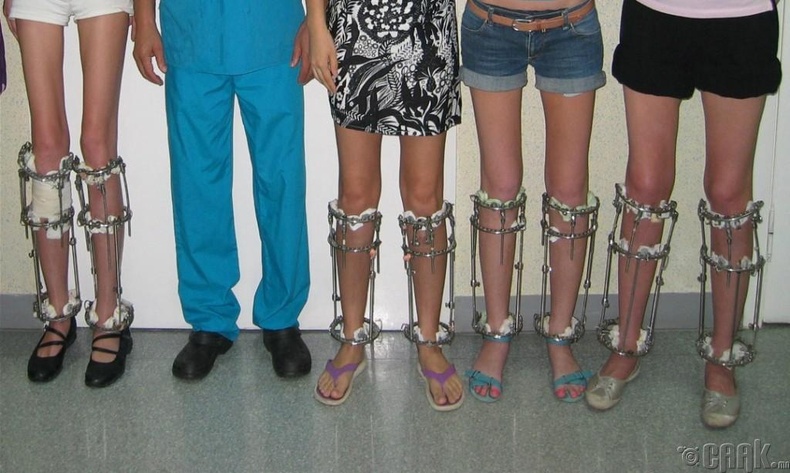 If you experience either of these reactions or you develop blisters where the bites occurred, it’s a good idea to make an appointment with a dermatologist.
If you experience either of these reactions or you develop blisters where the bites occurred, it’s a good idea to make an appointment with a dermatologist.
To treat an allergic reaction, the doctor may prescribe an antihistamine, corticosteroid, or epinephrine injection. If the area is infected, he or she might prescribe an antibiotic or recommend an over-the-counter antiseptic. Finally, if it’s severe itchiness that you’re dealing with, applying corticosteroid or taking an antihistamine in pill or liquid form may be able to help.
In most cases, the only way to say for sure whether it was a bedbug that bit you is to search for evidence of bedbugs living in your home. “Once you start to notice the itchy bites, the second giveaway is the presence of small blood spots on your sheets or mattress, usually resembling patches of rust,” Durham says. Those spots are left behind after a bedbug has been smashed.
You’ll likely only see them in their hiding spots or crawling across the floor since, unlike other insects, bedbugs cannot fly or jump. Durham says to check along the edges of your mattress. You may see the exoskeletons that bedbugs have shed as they matured, or you may notice a musty smell, both of which indicate there could be bedbugs in the area. It can also be helpful to check your bed with a flashlight during the middle of the night (since these crawlers tend to be more active at night.)
Durham says to check along the edges of your mattress. You may see the exoskeletons that bedbugs have shed as they matured, or you may notice a musty smell, both of which indicate there could be bedbugs in the area. It can also be helpful to check your bed with a flashlight during the middle of the night (since these crawlers tend to be more active at night.)
How to Cope With Stubborn Psoriasis Spots
Some psoriasis plaques may resist treatment even when the rest of your skin is mostly clear. Is there any way to get rid of those psoriasis spots?
By Howard Chang
5 Tips for Managing Foot Psoriasis
When painful, itchy, red, dry patches of psoriasis skin affect your feet, everyday tasks like standing or walking may be difficult. Here’s how to find…
By Nina Wasserman
5 Ways to Make Dating With Atopic Dermatitis Easier
It can be hard to feel attractive and confident with atopic dermatitis. Use these tips to meet new people and explore relationships even with flaring …
Use these tips to meet new people and explore relationships even with flaring …
By Kerry Weiss
How to Know if You Have Bedbugs
Bedbugs are small, oval, and reddish-brown. The telltale sign you have them is the itchy bite marks they leave on your skin (they feed on human blood,…
By Moira Lawler
The Emotional Toll of Having Bedbugs
Bedbugs don’t pose serious threats to your physical health. But having an infestation (no matter how mild) can come with real psychological consequences…
By Moira Lawler
All About Bedbugs
Having to deal with a bedbug infestation can be time-consuming, costly, and emotionally traumatizing. Here’s everything you need to know about determining…
By Moira Lawler
How to Safely Get Rid of Bedbugs
Pesticides used to kill bedbugs may also be harmful to humans if used improperly or if they haven’t been evaluated and registered with the Environmental. ..
..
By Moira Lawler
How to Get Rid of Bedbugs
To get rid of bedbugs successfully and for good requires a bit of work on your end. And usually bedbug infestations are best left to the professionals…
By Moira Lawler
How to Prevent Bedbugs (and Keep Them From Coming Back)
The easiest way to deal with a bedbug infestation is to avoid it in the first place, which is much easier said than done. Here are some tips for when …
By Moira Lawler
See All
how they look on the human body with a photo and how to treat them
Bedbugs are quite tenacious and dangerous insects. Scientists have long proven that these blood-sucking parasites can be carriers of various infections, including brucellosis, tularemia, Chagas disease and even hepatitis 1 . Also, approximately 80% of people have allergic reactions to bug bites 1 .
Also, approximately 80% of people have allergic reactions to bug bites 1 .
During the bite, the bug secretes an enzyme that prevents blood clotting, but you may not even feel the bite itself. This is due to the physiology of the creature: otherwise the bug runs the risk of being “caught”.
There is a strong opinion that bed bugs, including bed bugs, can appear in conditions of uncleanliness, among numerous dirty and unwashed things, and this is partly true. One of the common reasons for the appearance of these harmful insects is migration from already infected apartments. Bedbugs (or their larvae) can come to your house on neighbors, on their clothes, books, household items and animal hair (for example, street). So, if you find a bed bug in your house, this does not necessarily mean that you do not care enough about the order in the house. 9Bed bugs we breed they are most often found on old clothes, in unsanitary conditions, furniture, mattresses, bed linen 2 What bites look like usually in the form of a “path” of small red dots on the body Why bedbug bites can be dangerous reactions to bedbug bites can be nausea, muscle spasms, severe itching, redness and peeling of the skin, fear of sleep
What bedbug bites look like on the human body?
Almost immediately after a bug bite, blisters, redness and swelling appear on the skin, which are accompanied by itching, irritation, swelling.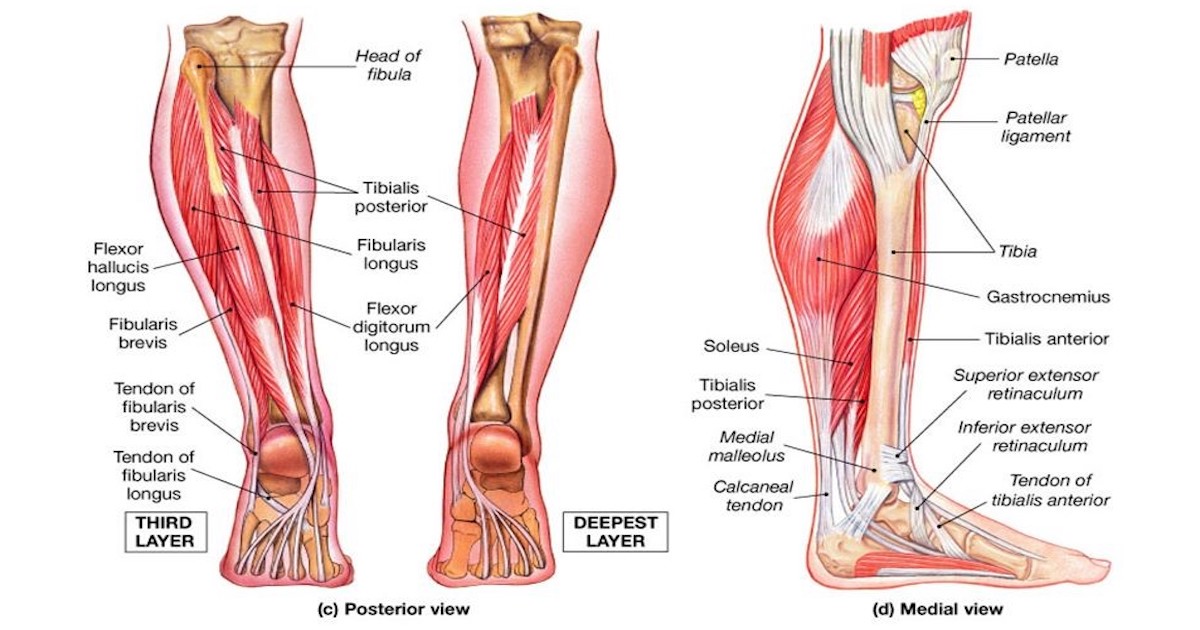 Most often, bites can be found on the legs, shoulders, back, neck – they look like dense red dots up to 1 mm in diameter, which form a “track” 3 .
Most often, bites can be found on the legs, shoulders, back, neck – they look like dense red dots up to 1 mm in diameter, which form a “track” 3 .
Photo: shutterstock.com
If scratched, bites can turn into large bright red and sometimes bleeding spots 3 . Also, traces of blood may remain on a person’s bed linen and clothing, coinciding with bite sites.
Bed bug bites. Photo: commons.wikimedia.org, Oliver Arend
How to treat bedbug bites
According to disinfectologist Nikolai Dubinin , bedbug bites are dangerous and painful, and also cause severe itching. To get rid of discomfort, you can apply something cold to the bite site, for example, ice. A compress with a solution of soda (about half a teaspoon per glass of water) is also suitable, or treat the bite site with an antihistamine cream or ointment, a special balm after bites 3 .
What are the consequences of bed bug bites?
Transmission of pathogens by bedbug bites is possible in theory in foci of infectious diseases, but in practice this has not yet been proven. Bed bug bites can be life-threatening and cause severe allergic reactions. After the bite, papules form, painful blisters that appear either immediately after the bite, or after 10-40 minutes. The severity of edema may increase, accompanied by severe itching and hyperemia.
Bed bug bites can be life-threatening and cause severe allergic reactions. After the bite, papules form, painful blisters that appear either immediately after the bite, or after 10-40 minutes. The severity of edema may increase, accompanied by severe itching and hyperemia.
Popular questions and answers
Sanitary doctor, epidemiologist, disinfectologist, pest control expert Nikolai Dubinin answers the most popular questions about bedbug bites.
Who is most often bitten by bed bugs?
– Period of parasite activity – night time. Most often, bed bugs bite people in bed, and turning on the light will not help to avoid bites. When given a choice, bed bugs choose tender skin that is easier to bite through, such as women and children 2 . However, this does not mean at all that bedbugs do not bite men. Bedbugs bite all people, regardless of gender and age.
Bed bugs also prefer drunk people. The fact is that under the influence of alcohol, the human body releases more sweat and hormones that attract attention and whet the appetite of insects.
How many times does a bug bite a night?
– Bed bug bites are often called “breakfast, lunch and dinner” because they bite exactly three times. But there is more. If there is only one bite, most likely it was not an adult that bit, but a larva, which needs a smaller amount of blood to saturate.
Who doesn’t get bitten by bed bugs?
– Bed bugs choose a host with thinner and smoother skin, however, they bite absolutely all warm-blooded.
How to treat bed bug bites?
– Treatment after bedbug bites is prescribed depending on the clinical condition of the patient. Local allergic reactions can be treated on an outpatient basis, with the appointment of local or general therapy. The bite site is cooled, topical glucocorticosteroid agents are used, including combined ones, which contain an antibiotic and an antifungal agent. Such drugs help reduce itching, increase swelling and prevent the spread of infection.
How to protect yourself from bedbug bites?
– If you are a victim of bed bugs in your home, the best option to get rid of them once and for all is to have the entire room professionally disinfected. You need to disinfect the house, even if you find only one insect, because they multiply quite quickly. In addition, essential oils will help scare away bedbugs (they can be applied to the body before going to bed), perfume lotions with a pronounced aroma.
You need to disinfect the house, even if you find only one insect, because they multiply quite quickly. In addition, essential oils will help scare away bedbugs (they can be applied to the body before going to bed), perfume lotions with a pronounced aroma.
To prevent your home from becoming attractive to small parasites, it is recommended to regularly check furniture, mattresses, things for the presence of insects, monitor the condition of pets (especially those who are most often on the street), carry out regular wet cleaning in the house, be sure to move furniture, because you may not know about the presence of bedbug nests.
In addition, bedbugs do not like high temperatures (over 60°C), so upholstered furniture can be steamed regularly.
Sources:
- Roslavtseva SA Modern distribution of bed bugs in the world (literature review) // Hygiene and sanitation. 2020. №3. https://cyberleninka.ru/article/n/sovremennoe-rasprostranenie-postelnyh-klopov-v-mire-obzor-literatury
- Bed bugs.
 What to do if there are bed bugs in the apartment? Center for Hygiene and Epidemiology in the Republic of Bashkortostan. Article dated 12/24/2020.
What to do if there are bed bugs in the apartment? Center for Hygiene and Epidemiology in the Republic of Bashkortostan. Article dated 12/24/2020.
https://sesufa.ru/novosti/postelnye-klopy-chto-delat-esli-poyavilis-klopy-v-kvartire/?sphrase_id=19055 - Bed bug bites. Zarechnaya S.N. Dobrolov, article dated 18.07. 2021.
https://dobrolov.com/info/news/ukusy-postelnykh-klopov/
How to get rid of bedbugs and their bites: all means
Bedbugs in the house are an unpleasant phenomenon, but it is quite possible to deal with it. How to detect bedbugs in the house, what their bites look like, what means will definitely help get rid of bedbugs – RBC-Real Estate understands together with an expert
Photo: Shutterstock
Bed bugs are not a thing of the past. These parasites can appear in any apartment, and its social status is completely unimportant for bloodsuckers.
- How to understand that there are bugs at home
- How to detect bed bugs
- How to get rid of bed bugs
Experts in this article
- Maria Boyko, MD, gastroenterologist, therapist of the Semeynaya clinic network
- Petr Fisenko, Disinfector Specialist, Dez_Hunter Disinfection Service
adv. rbc.ru
rbc.ru
How to understand that there are bed bugs at home
Bed bug is a blood-sucking insect. About 0.5 cm in size, dark yellow or brown. The body is flattened – this shape helps in most cases not to be crushed, for example, when a person turns in a dream. A well-fed parasite is less mobile and more rounded. This nocturnal insect attacks during sleep, when the victim is as relaxed and defenseless as possible.
Manifestation of a bug bite – a blister of about 2-5 mm
(Photo: Casey Nye/Flickr.com)
They can appear for a variety of reasons. Cleanliness and constant hygiene of the premises, of course, reduce the risk of infection, but also not a panacea. An insect can be brought on shoes, building materials, from any crowded places.
Renting an apartment: what problems arise when renting a house
What bedbug bites look like
One of the first signs that bedbugs live in the house is the appearance of bites on the body. Since the insect moves along the body in the process of saturation, the wounds are located nearby, most often in a chain. One bloodsucker can put about three to five wounds.
Since the insect moves along the body in the process of saturation, the wounds are located nearby, most often in a chain. One bloodsucker can put about three to five wounds.
Insect bites can cause a severe allergic reaction: they become inflamed and enlarged, and sometimes the temperature may rise. However, in some people they do not appear at all. This does not mean that the bugs bite selectively, it’s just that the body does not always give out a reaction.
Maria Boyko, Candidate of Medical Sciences, gastroenterologist, therapist of the Semeynaya clinic chain:
— Bed bugs painlessly bite exposed skin at night and are rarely noticed by victims. Bites usually occur on the face, neck, and hands. Some people do not react, and the only sign of a bite is a small dot. It has been observed that they are less common in older people.
The classic manifestation of a bug bite is a blister about 2-5 mm, which is most often accompanied by itching. Some patients have asymptomatic purplish spots at the bite sites, which may also present as hives.
Some patients have asymptomatic purplish spots at the bite sites, which may also present as hives.
Skin reactions may occur on waking or a few days after bites. Usually bites disappear after a week.
If the bites become infected, see a doctor immediately. Treatment of such complications can take several weeks.
The causative agents of some diseases, such as hepatitis B virus, methicillin-resistant Staphylococcus aureus and others, have been found in bedbugs, but no clinical transmission of these diseases to humans has been identified.
It is believed that in an apartment infested with bed bugs, there is a smell that is compared with the aroma of nutmeg or cheap cognac. But with a small accumulation of these insects, it may not smell like anything.
How to detect bed bugs
- Check your bedding carefully. Bedbugs leave excrement – small black dots. You can also see tiny traces of blood after bites.
- Since these insects are active at night, they can be seen around four or five in the morning if the lights are turned on.
 It is during this period that they crawl out.
It is during this period that they crawl out. - Be sure to check the possible habitat of parasites. The bloodsucker tries to stay closer to the power source, so it most often hides in the seams of the mattress, sofa, upholstery – not far from the bed. But they can also hide in places where they are unlikely to be disturbed: in baseboards, cracks or behind pieces of peeled wallpaper, paintings, carpets.
- Even if the insects themselves are not visible, discarded chitin shells remain in their habitats.
Discarded chitin shells remain in their habitats
(Photo: Shutterstock)
How to get rid of bed bugs
The ideal temperature for bed bugs is +20–30 °С. Therefore, its significant change can kill them. But they are quite tenacious and in uncomfortable conditions are able to slow down life processes – fall into a state resembling suspended animation, without needing food for months.
1. Apply heat
A mark on the thermometer over 45 °C is fatal for bed bugs and their larvae [1]. Therefore, boiling or washing clothes at a high temperature for at least 30 minutes will help get rid of them. The higher the temperature, the sooner and more likely the insect will die.
Other items should be carefully treated with a steamer or iron. Heat guns will also help in cleansing the house of parasites.
In summer, you can pack your things in black bags and take them out into the sun.
But the death of bedbugs will come only in direct contact with heat, if during processing they hide deeper from the heat source, then the temperature increase will be non-fatal for him.
Ultraviolet rays are also harmful to these insects. Therefore, drying household items in the sun will also help.
2. Exposure to cold
Bed bugs can survive temperatures as low as -10°C for about three weeks [2]. To quickly destroy them, you need to lower the temperature: larvae and adult insects die at -16 ˚C in 82, and at -24 ˚C – in 24 hours. Things can be placed in the freezer or taken outside if it’s cold outside.
Things can be placed in the freezer or taken outside if it’s cold outside.
A significant change in temperature can kill bed bugs
(Photo: Shutterstock)
3. Use popular bedbug products
- Vinegar. He can help, but only if they flood the nest itself. It is mainly used for scaring. In the manufacture of home remedies for bedbugs, vinegar is mixed with ethyl alcohol and naphthalene.
- Turpentine. It can only be used on hard surfaces away from fire, as it is flammable. The smell of the substance is unpleasant and weathered for a long time. The product may leave stains.
- Ammonia diluted in water. Spray on surfaces. This should only be done with the windows open.
- Kerosene can also help control bed bugs. Paper or cloth moistened with a substance is placed on all points of the possible habitat of insects.

- Boric acid. The powder is scattered in places where parasites are located.
- If these methods did not help, then chemistry is indispensable. Bed bug aerosols and powders are available in almost all stores. The result from their use is about the same.
4. Disinfect from bedbugs
The most effective way is to contact a specialist. Before the arrival of the disinfector, prepare the apartment.
It is necessary to do a thorough wet cleaning, curtains, bed linen and clothes should be washed at a high temperature (at least 60 degrees). You also need to move the furniture away from the walls and cover all the equipment (so that the solution does not damage). You will also have to de-energize the wiring in order to be able to process the sockets. Remove dishes and food in advance.
To make a bed bug solution, you will need water, so you must not block access to it.
Petr Fisenko, Dez_Hunter Disinfection Specialist:
— Bed bugs can appear anywhere. They live next to people. When there are a lot of them, part of the population remains to live where it was, and the rest go to neighbors through communications, ventilation holes, cracks.
They live next to people. When there are a lot of them, part of the population remains to live where it was, and the rest go to neighbors through communications, ventilation holes, cracks.
Do I need to apply to the management company? According to SanPiN, management companies must carry out disinfestation of basements and garbage chambers. But the apartment is the area of responsibility of the residents.
Many, having noticed bedbugs in the house, begin to fight with their own methods. For example, use lavender. But if we take into account the fact that resistance (the so-called immunity) to professional chemicals is growing in parasites every year, then, alas, the smell of lavender will not destroy them. But you can try to protect your home from migration from neighboring premises, since the smell of lavender has some deterrent effect for these parasites. For example, you can lay out bags of lavender in linen drawers and in baseboards along the walls adjacent to “suspicious” neighbors.
I also don’t recommend getting rid of bed bugs with products bought in ordinary stores. They do not act on the entire part of the population, because the active substances are diluted there in very small quantities. Only a specialist can maintain the correct concentration of the substance in order to kill all the bugs.
Folk methods, it seems to me, are completely irrelevant and do not help. If you notice bites, you need to contact a specialist.
Bedbugs are one of the most difficult parasitic insects to breed. First, they are not immediately visible to the naked eye. Secondly, they multiply very quickly and for a long time (more than a year) they can do without food (blood). Thirdly, they adapt very well to insecticides (chemical preparations). Several active ingredients have to be used.
If the apartment is heavily infested, spot disinfection is carried out. After two to three weeks, the procedure is repeated for prevention and can be carried out two to three times.

 Flea or chigger bites, on the other hand, usually only appear around your ankles, Durham says.
Flea or chigger bites, on the other hand, usually only appear around your ankles, Durham says. What to do if there are bed bugs in the apartment? Center for Hygiene and Epidemiology in the Republic of Bashkortostan. Article dated 12/24/2020.
What to do if there are bed bugs in the apartment? Center for Hygiene and Epidemiology in the Republic of Bashkortostan. Article dated 12/24/2020.  It is during this period that they crawl out.
It is during this period that they crawl out.